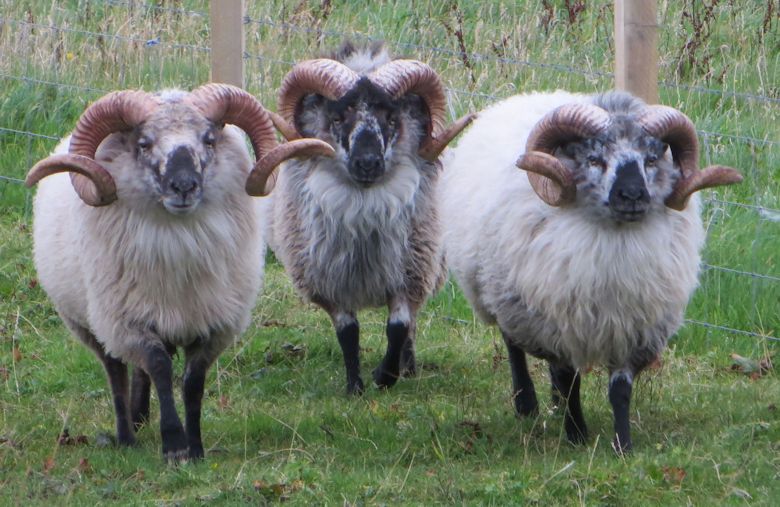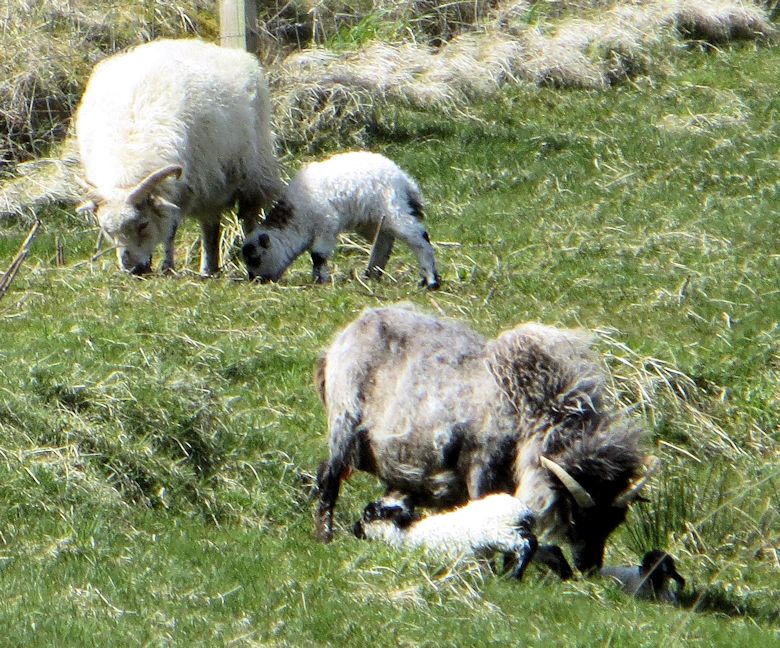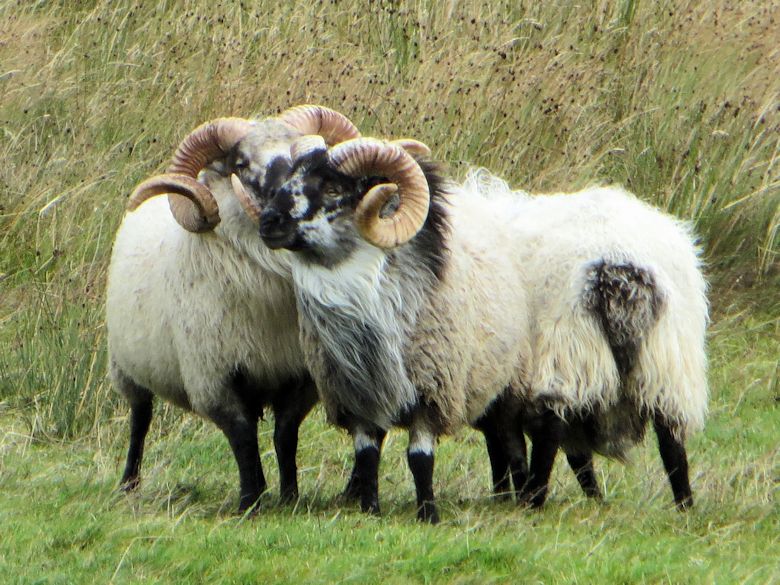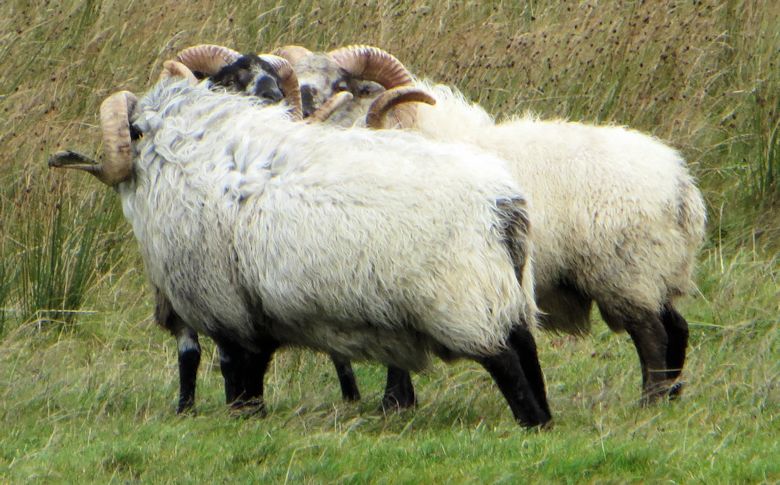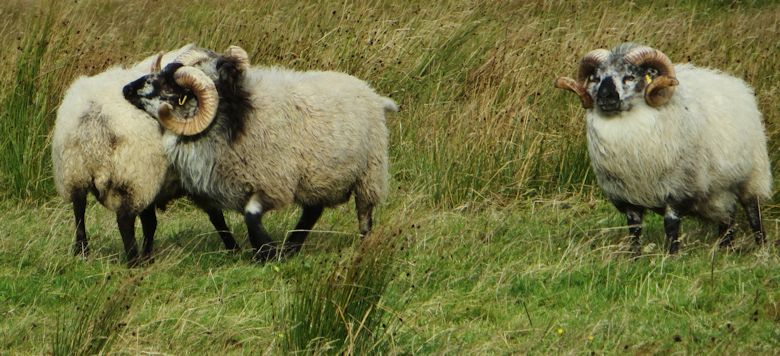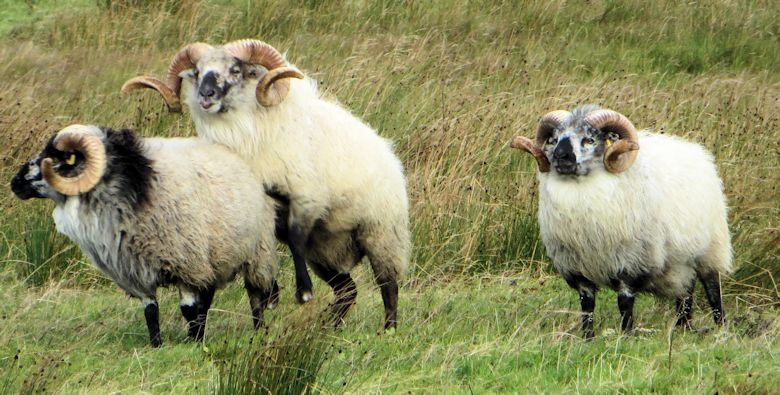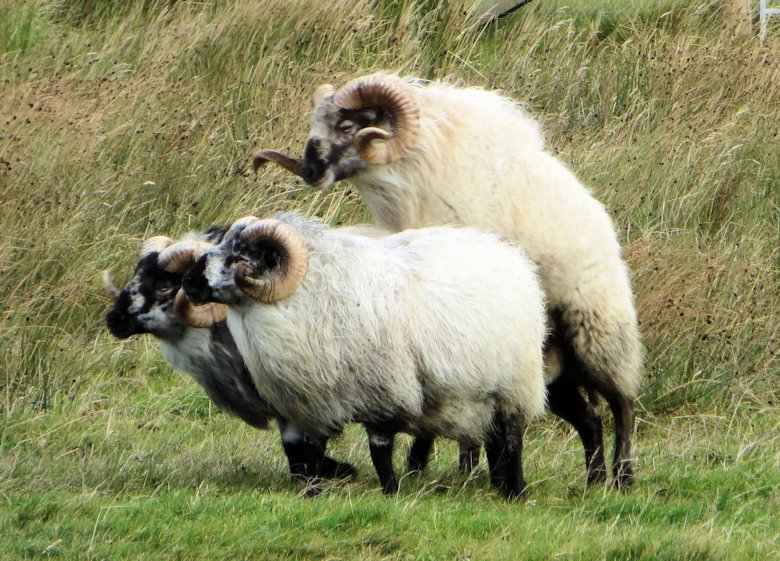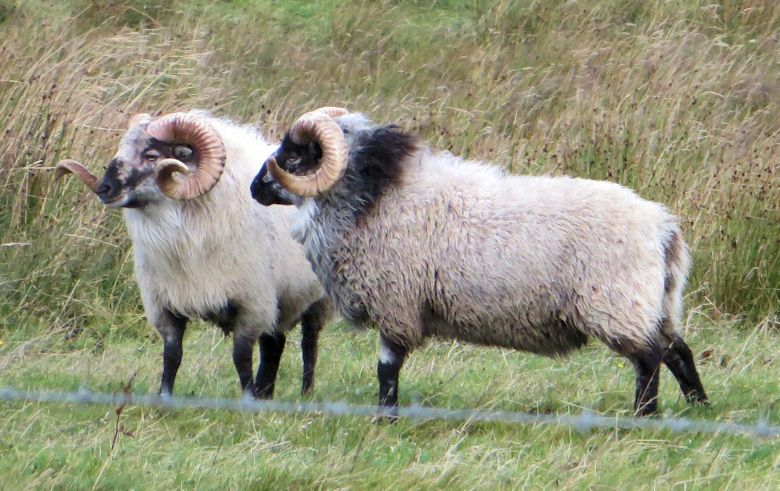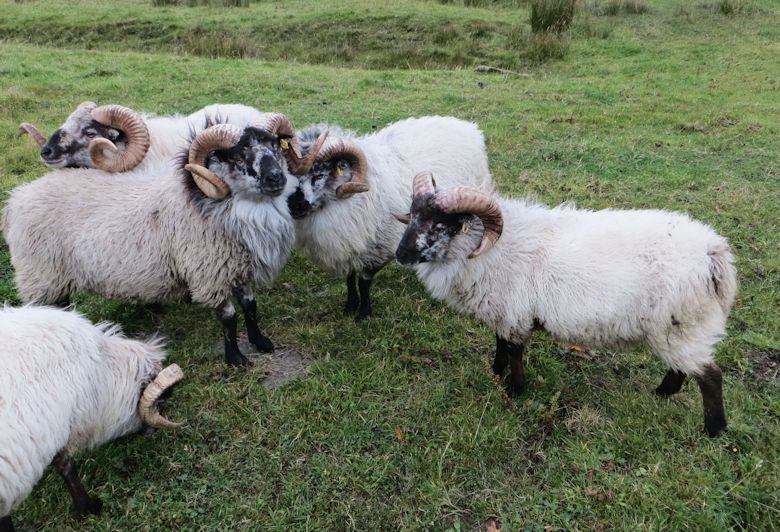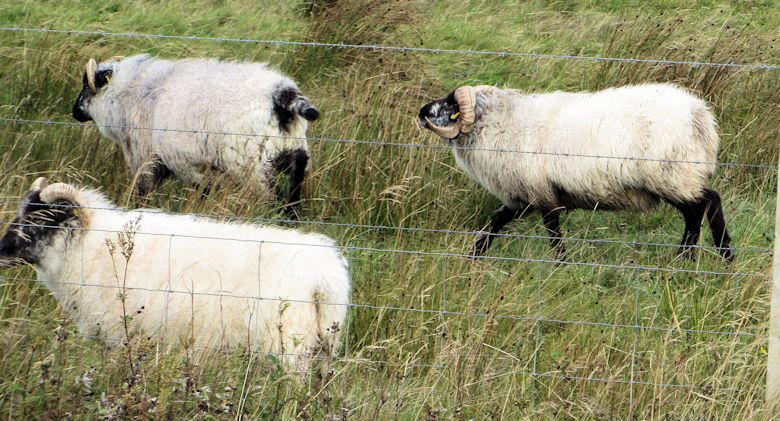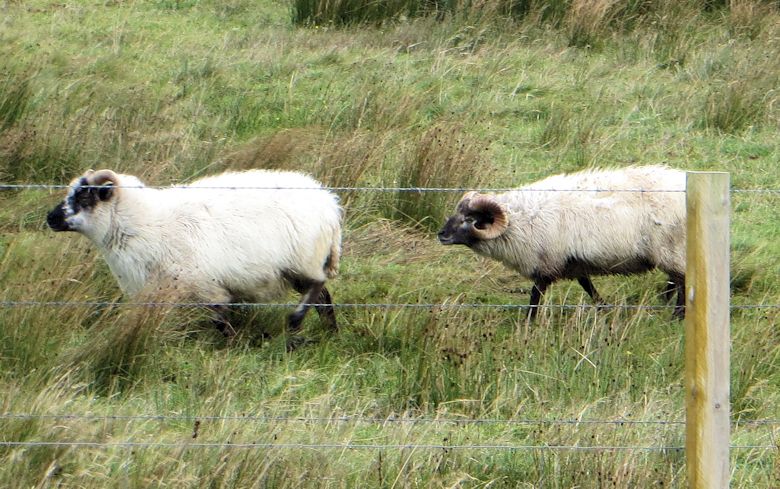This evening we shall be meeting some lambs. However in order to have lambs, you must have rams or tups as they are often known… Here are Jane Cooper’s characterful Boreray boys in a post by Jane which gives meaning and context to the terms ‘tup’ and ‘tupping’.
Introducing, from left to right, Bollocks, Bede and Boris. Three Boreray rams that are all 2 ½ years old and fully mature for mating.
Autumn is the time when male sheep, rams, are ready to mate. Tupping is the term, so often rams are also called ‘tups‘. It’s the same as the rut that you see in wild ruminant animals. Pregnancy in sheep is about 4 ½ months long so ewes mated during WOVEMBER will be lambing in late March and April.
Here in Orkney there is a trend for spring to be ever later with wild, wet weather through April. Since my Borerays prefer to lamb outside, I tup at the end of the year so lambs are born in May.
When together rams will physically challenge one another for hierarchy and breeding privileges. The size and height of rams and the size of their horns, if they are a horned breed, play a part here. Hormones have been rising for a few weeks now in my Boreray rams, resulting in some fascinating behaviour as they work out their ranking. I need to adjust my behaviour as well when I’m in the field with them, and everyone should remember that any ram can be unpredictable, especially at this time of year. Never turn your back on a ram!
As the horns on my primitive breed Boreray suggest, head butting is one way of establishing dominance. The sound of two rams clashing heads and horns can be heard several fields away. I’ve seen it a number of times, but not yet managed to get a good photograph. One day I’ll get lucky. However more common than head butting is a lot of pushing, shoving, and other dominance behaviours. When rams mate with ewes their behaviour includes nudging, kicking, or pawing with the front legs, low stretching, and pushing. These same behaviours, plus the head-to-head butting with horns clashing, occur between rams that are together at this time of year. I managed to get some lovely photos of Boris, Bede and Bollocks engaging in this type of behaviour.
First – always know where your competitors are. So these three rams, which were all born in 2013 and are fairly similar in size, spend a lot of time in close contact.
Of course, three hormonal rams touching leads to the inevitable jostling – lots of it!
The next level is side-on shoving and wrestling. There is a lot of one ram pushing his horn and shoulder into the side of another ram. They seem determined to get their head above the back of a rival ram, and will circle each other for some time ‘locked’ in this position.
What this photo also shows is that Boris, the ram alone on the right, has for now accepted the third ranked position. This is leaving Bollocks and Bede to fight over the top and second ranks.
When one ram wins (for now!) he may demonstrate his dominance by mounting the losing ram, as you can see Bollocks doing here to Bede after a prolonged period of jostling and turning.
On another occasion Bollocks put both Boris and Bede firmly in their places. What I find interesting is that the losing rams accept this and stand still for the victor to do his triumphant mounting.
At other times the winner of a confrontation will just use body language to show his dominance. Here Bede is the winner and is standing in an upright assertive manner. Bollocks, as the loser. has turned his head away and his stance is much more submissive.
I have another two rams, both a year younger than the big boys. They are firmly subordinate to the older trio, their size being significantly smaller as you can see here. Borerays take three years to fully mature and reach their full size, although their horns continue to grow after this. It was tricky to get a photo of all five together, but here is Cuthbert on the right at the front and Charlie just on the left. You can clearly see Cuthbert showing obvious submission to the older trio. The two younger rams normally won’t be accosted by the older ones as long as they remain submissive.
To dilute the tensions and hormones I’ve introduced my wethers (castrated male sheep, known as wedders in Orkney) to the ram flock. It means every ram always has a sheep they can feel comfortably dominant over. It does however lead to some amusing behaviour from the younger rams. They obviously operate on the principle that anything not reeking of testosterone must be a ewe……. So the poor wedders had a few days of being chased around by excited Charlie and Cuthbert.
Here is Cuthbert pursuing Bilbo, a 2 ½ year old wether. At his point he’d been chasing him round the field for several minutes. Note the head position – held low and with the nose pointed forwards and slightly up.
It’s also common for the upper lip to be curled back and for the tongue to lick the lip to keep it moist. This all helps the ram to better smell any scents the sheep in front is giving off. Both the head and low body position and the lip licking and curling are seen when rams are around ewes.
Here is Charlie trying to get close enough to Corin, a wedder the same age, so he can have a really good sniff at him.
This year I’ll be using Bollocks and Boris on my ewes, in two separate groups, but the boys will have to wait until the end of December to get to work. Hopefully we’ll have some lovely Boreray lambs born in May next year and an increase in numbers of the UK’s rarest breed of sheep.
Thank you Jane for this wonderful introduction to your Boreray tups! All images and words © Jane Cooper and used here with kind permission.
